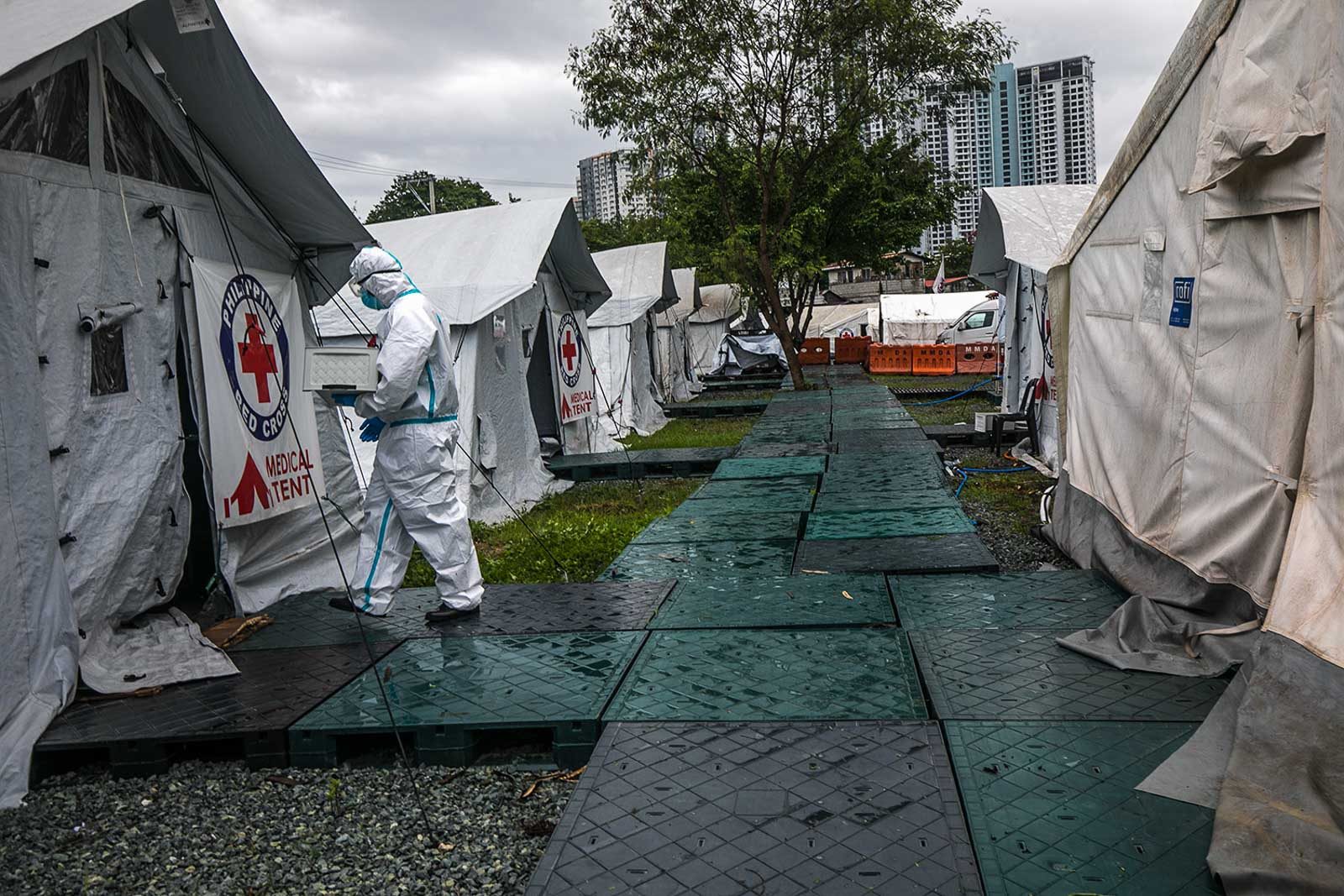
MANILA, Philippines – 2021 was the “deadliest” year in Philippine history as the government recorded more than 879,000 deaths, the Commission on Population and Development (PopCom) said, citing figures from the Philippine Statistics Authority (PSA).
There were at least 879,429 deaths in the Philippines and among Filipinos in foreign countries, according to PSA’s data. COVID-19 contributed to a chunk of the mortality count, with 105,723 pandemic-related deaths recorded.
The figure is 71% higher than the 30,188 COVID-19-related deaths in 2020.
The PSA’s figure for COVID-19 deaths in 2021 is much higher than the Department of Health’s death toll, which is pegged at 62,167 as of September 7. The DOH’s tally includes deaths from 2020, the pandemic’s first year.
The PopCom explained that the PSA has a different set of records from the DOH. According to PopCom Executive Director Juan Antonio Perez III, the PSA follows the World Health Organization (WHO) guidelines on reporting COVID-19 deaths, which were endorsed by the DOH in 2020.
The WHO guidelines provide that COVID-19 may be declared as the cause of death in cases where COVID-19 was confirmed by a test, and in cases where no test confirmed the disease but a doctor clinically diagnosed the patient with COVID-19.
“DOH reports only laboratory-confirmed deaths that have entered their surveillance system, thus the smaller number,” Perez said, adding that the DOH figure was therefore incomplete.
For 2022, the PSA recorded 10,226 coronavirus-related deaths as of May 21, placing the total death toll from the start of the pandemic to May 2022 at around 146,137. COVID-19 is one of the leading causes of death in the country, according to data from the PSA as of April 2022.
Comparisons, other diseases
The 2021 PSA death toll was 265,493 more than 2020’s 613,936. It represents a 43% increase – a vast difference from the rise in number of deaths averaging around 1% to 5% during “normal years,” the PopCom said.
The crude death rate (CDR) in 2021 – or the ratio of the number of deaths occurring within one year to the mid-year population expressed per 1,000 population – was estimated at 8.02 per thousand Filipinos. This is a sharp rise from the rate of 5.6 per thousand in 2020, the PopCom reported. The PopCom said the last time a CDR was around this high was in 1958, when it was at 8.4.
The deadliest month in 2021 was September, when 119,758 Filipinos died. While this number represents all causes of death in September, at this time, the Philippines faced a record-breaking surge in COVID-19 cases driven by the Delta variant.
Meanwhile, thousands of lives were claimed by other diseases in 2021. These included ischemic heart disease or heart attacks, which were up by 29.7%; cerebrovascular disease or strokes, which were up by 15.3%; diabetes mellitus, up by 21%; and hypertension, up by 31.5%.
Deaths due to malnutrition increased by 47%. Meanwhile, deaths from various forms of cancers were down by 10.3%.
“Many of the diseases that caused increased mortality are preventable at the primary level of care, but the health system was not flexible enough to treat and care for both COVID and non-COVID patients,” Perez said.
“On the other hand, the decrease in cancer-related deaths was most likely due to the lack of tertiary level of diagnostic and therapeutic care, as ‘COVID’ cases crowded out actual and undiagnosed cancer patients,” he added.
Perez called for more resources for the Philippine health system as it was “severely challenged” in 2021.
Two months into his term, President Ferdinand Marcos Jr. has yet to name his health secretary, though the DOH is led by an officer-in-charge, Health Undersecretary Maria Rosario Vergeire. The department is set to defend its proposed 2023 budget at the House of Representatives on Monday, September 12.
